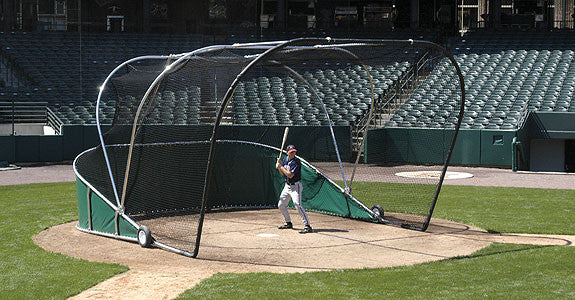As we get into the middle the summer many of us are umpiring tournaments in the final season games before we move into our high school seasons.
Had this unusual situation occur on the field just the other day and wanted to know how you think it should have been called by the umpire.
=====================================
a runner was rounding third base looking back inside to see where the ball was and he ran into the third baseman that had moved all the way to file territory almost in the coaches box. This runner ran into the third baseman did not have the ball fell down ( was asked the injured a little) but after he had fallen to the ground the third baseman receive the ball and take him out. The coach wanted obstruction and to even allow him to score-- the other coach said it was the runners responsibility to know the was going and ran into the third baseman on purpose hoping that there would be a bad throw. What would you rule go to the chatline and give me your answer.
=============================
The umpire ruled as I believe to be correct that it was not obstruction the runner was so far how the baseline running into a player that was clearly away from the bag that it became neither interference nor obstruction just to play that got the runner tagged out. It's unfortunate that he got slightly injured but the third baseman was not in the wrong place he was trying to avoid the runner so no obstruction and the runner did not create interference because there is no interference to involved as a result throw. So no obstruction and no interference we have just the play of the runner getting tagged out at third.
Umpire Arnald Swift
Coach's players fans all question umpires strike zone- but let me ask you what is the strike zone.
First let's talk about the width of the strike zone the plate itself is 17 inch across and a BB has a diameter of three and half inches and softball is a diameter of 5 inches. So now the question is does the ball have to be completely over the white 17 inches or can it be just touching thought white to be considered over it and a strike. If that's true were really expanding the strike zone anywhere from 3 inches to 4 inches depending on the game or playing. Most umpires believe it just has to touch the white and it's my personal belief that players, coaches and fans like to see that it keeps people swinging let's pictures throw better and keeps the game more interesting.
But what do you think????
Let's revisit drop third strike. Once again I watched ballgames have umpire ballgames that this gets to be an issue. First a drop third strike is any third strike that's called or swung at that strikes the ground before goes into the catchers glove or falls out of the catchers glove and goes to the ground, not being held securely from the pitch or from the swing.
Now that we've defined that when can you run you can run on third strike meets the definition above any time for spaces open. But here's where the confusion comes if first space is occupied with less than two outs (0 or 1) then the batters out automatically even if he attempts to run deficient not play he cannot advance in the runners can only advance at their own risk. Now here's where the confusion comes in with two outs in the same exact play occurring the batter can run even with first base occupied. Now normally the catcher would just simply throw to the first baseman and the batter would be declared out but we need to keep in mind that all the force rules are still in play. The one that we see most of the time is bases-loaded missed/dropped third strike catchers picks it up and touches home plate which is legal and the runner coming from third base is the one that's declared out.
We got into this discussion just the other day when one of the parents said they couldn't run with the runner at first base because the play before with less than two outs the umpire declared the batter out then sure enough with two outs the batter struck out again with the catcher dropping the ball and they allowed him to run to first with no throw because coaches didn't know the rule and everybody was safe. In the course the coaches one complain that he was out a minute ago and now you changed your ruling and now I safe of course that's not true the difference is one time was with less than two outs. The other time was with two outs.
We need to add to this a little bit, if a catcher does not touch the batter and the batter leaves the batters box and no play is made the runner could be told to run and go directly from where he stands to first base. This is a very valid rule in high school, college, Pro now when you what's major-league ball on TV you see this occur you see the catcher facing the batter in the batter is walking away that's considered a play in the runner has given up and become out but the catcher must acknowledge the runner and the runner must either start to first base or if he gives up he declared out. There's no such thing as leaving a box and being automatically out or leaving the baseline and being automatically out.
Umpire Arnald Swift
Lets look at this play from 2 directions.
1. Rule it is a foul tip if the ball goes directly from the bat to the catchers glove or hand.
Now what if it misses the glove/hand and comes off his chest protector or mask. It is not a catch only a strike and is ruled a foul ball.
What if it hits his glove then to chest protector/mask and back to his glove it is a catch and shall be ruled a foul tip.
Here is the rule out of the book:
(2) A third strike is legally caught by the catcher;
Rule 5.09(a)(2) Comment (Rule 6.05(b) Comment): “Legally caught” means in the catcher’s glove before the ball touches the ground. It is not legal if the ball lodges in his clothing or paraphernalia; or if it touches the umpire and is caught by the catcher on the rebound.
If a foul tip first strikes the catcher’s glove and then goes on through and is caught by both hands against his body or protector, before the ball touches the ground, it is a strike, and if third strike, batter is out. If smothered against his body or protector, it is a catch provided the ball struck the catcher’s glove or hand first.
drop 3rd strike and what to do and when to do it
This season has started out really very well with not a lot of controversy, you always have some question about balls and strikes, safe and out,, Fair or foul but those are things every umpire is faced with every game.
The interesting question has come up recently about throwing to an unoccupied base,, I've seen it several times now in the real young baseball were when a guy gets on base they're going to steal and the cancers aren't able to stop them. This can certainly come up at any level but it's more prevalent here. Here's the situation And how I read the rule book and how I call it is an umpire. Runner is at first base, no one has at second has the right handed picture comes set and even lift his leg but makes no move to home, and that's important makes no move to home he sees the runner break so he continues to pivot to second base and throw the runner out. Almost the same thing runner at second base and no one on third as the pitcher comes set and raises his leg again making no move toward home plate the runner breaks he simply steps the third and throws the ball in the runners tagged out.
Now what most coaches want to call is a balk, because they through to an unoccupied base,, what they don't know is the rule that follows that first statement where it says except to put out or drive back and advancing runner. That's all that pitcher did. He never made moved home plate in the throw to second it was just the inside out move, spend move, that every pitcher does going back to second base, when he went to third base it's the same exact move every left-hander does going to first base only this time he went to third two put out or drive back and advancing runner.
Just to finalize this I looked up in the major-league rule book the following: The pitcher, while touching his plate, throws, or feints a throw to an unoccupied base, except for the purpose of making a play;
Rule 6.02 (a)(4) Comment (Rule 8.05(d ) Comment): When determining whether the pitcher throws or feints a throw to an unoccupied base for the purpose of making a play, the umpire should consider whether a runner on the previous base demonstrates or otherwise creates an impression of his intent to advance to such unoccupied base.
=============================
((d) The pitcher, while touching his plate, throws, or feints a throw to an unoccupied base, except for the purpose of making a play;
Rule 8.05(d) Comment: When determining whether the pitcher throws or feints a throw to an unoccupied base for the purpose of making a play, the umpire should consider whether a runner on the previous base demonstrates or otherwise creates an impression of his intent to advance to such unoccupied base.
So next time the pitcher throws to a base that somebody advancing to it's not a balk.
Umpire for 40+ Arnald Swift
Running Lane and Interference
The batter is out if, in running to first base, the batter-runner is hit by a throw while running outside of the 3 foot running lane, or interferes with the fielder taking the throw at first base. He could be called out even if he is not hit by the throw, if the umpire judges that by being outside the lane he interfered with the fielder’s attempt to field the throw. There must be a throw before interference can be called and the throw must be a quality throw. Rule 6.05(k).
A runner is not free from interference while in the lane, nor automatically guilty when out of the lane. If he is out of the lane he is in serious jeopardy of being called for interference, but it is not automatic, unless he is hit by the throw, or commits an intentional act of interference. The rule states that he is out when out of the lane AND causes interference with the fielder taking the throw. If he is out of the lane and is hit by the throw, that is always interference. If he is in the lane he could still cause interference, but it would have to be something obviously intentional (like grabbing the fielder's arm or glove, or deliberately touching a thrown ball). If the catcher does not make a throw because the runner is outside the lane, this is not interference. Interference with a thrown ball must be intentional. Such as, deliberately making contact with it. Or in this case if the runner is hit by the throw while outside the lane. The lines marking the lane are part of that "lane," but the runner must have both feet within the lane or on the lines marking the lane, to be judged as "in" the lane. Rule 7.09(k) casebook, N.A.P.B.L 4.14.
If the runner is hit by the throw or a collision occurs on his last step before touching the base; generally interference is not called. The runner has to step into fair territory to touch the base that is in fair territory.
-
You must tag the base with your foot on a force out or appeal.
You may tag the base with any part of the body or glove as long as you have firm and secure possession of the baseball in your hand or glove/mitt.
-
The ball is always immediately dead on a balk.
You are correct in high school baseball but in NCAA and professional rules, the ball is dead sometimes immediately but when the balk is followed immediately by a pitch, the ball is delayed dead and we wait until the end of the play and then either enforce the balk or allow the play to stand. If all base runners, including the batter-runner advance one base or more after the balk, the play stands. The coach or manager does not have an option on this rule.
-
If a player's feet are in fair territory when the ball is touched, it is a fair ball.
It is the location of the baseball when it is touched or touches the ground that determines it being fair or foul and not the position of the fielder’s feet.
-
The ball must always be returned to the pitcher before an appeal can be made.
If the ball is live, you may go directly to the missed base or the runner and tag him for missing the base or leaving it too soon on a fly ball that is caught.
-
With no runners on base, it is a ball if the pitcher starts his windup and then stops.
For a balk to be awarded, there needs to be runners because the penalty is 1 base awarded.
- The pitcher must come to a set position before a pick-off throw.
The pitcher need only come to a complete and discernible stop prior to pitching the ball and not for a pick off attempt.
-
The pitcher must step off the rubber before a pick-off throw.
In fact, if he does step off first and the ball is thrown away into dead-ball territory, the award is 2 bases. From the rubber, it is only a 1 base award.
- If a fielder catches a fly ball and then falls over the fence it is a home run.
If the catch occurs before leaving the field of play it is a catch and not a home run.
-
The ball is dead anytime an umpire is hit by the ball.
This is only true on a batted ball that the ball is dead. On a thrown or pitched ball, it is unfortunate but the ball remains live.
-
The home plate umpire can overrule the other umps at anytime.
The home plate umpire has no more right to overrule his partner(s) than they have to overrule him. In certain situations the UIC may have to change a call because of more correct information but no umpire has the right to overrule another.
BASEBALL RULES MYTHS
1. The hands are considered part of the bat.
No baby was ever born with a bat in his hands. Therefore, as an umpire you must judge if the ball hit the bat or the batter first.- Unless batter swings then it is a strike-------
2. The batter-runner must turn to his right after over-running first base.
The batter-runner must make an attempt to advance toward 2nd base in order for him to be liable to be tagged out.-------
3. If the batter breaks his wrists when swinging, it's a strike.
This could be one of the criterion in which you judge if he swung or not. The best statement you can make when asked about a check swing is that he attempted or did not attempt to swing at the pitch. Other criterion might be that the barrel of the bat goes past the middle of the batter’s body or not. One other criterion might be that the bat crossed the middle of the plate.-------
4. If a batted ball hits the plate first it's a foul ball.
To rule it foul it must have come to rest in foul territory or be touched in foul territory.-------
5. The batter cannot be called out for interference if he is in the batter's box.
The batter’s actions are what causes interference and not necessarily where he is. In the batter’s box, if he does nothing out of the ordinary, it is more difficult to commit batter interference but it is possible.-------
6. The ball is dead on a foul-tip.
The ball is always live on a foul tip. Therefore runners may be put out or advance at their own risk on a foul tip.-------
7. The batter may not switch batter's boxes after two strikes.
The batter may switch batter’s boxes at any time while the ball is dead.-------
8. The batter who batted out of order is the person declared out.
The batter that is supposed to bat is the one that is declared out.-------
9. The batter may not overrun first base when he gets a base-on-balls.
This is true in National Federation Rules but it is not true in NCAA or professional rules. -------
10. The batter is out if he starts for the dugout before going to first after a dropped third strike.
The batter is out if he leaves the dirt circle around the plate area after a dropped 3rd strike unless he is making an attempt to reach 1st base.
In baseball can you tag out a guy without the ball being in the mitt?
When a fielder tags a runner he must tag him with the ball or with his glove with the ball in it. However, if while making the tag the fielder does not have complete control of the ball then it shall be as if the fielder didn't tag the runner.










